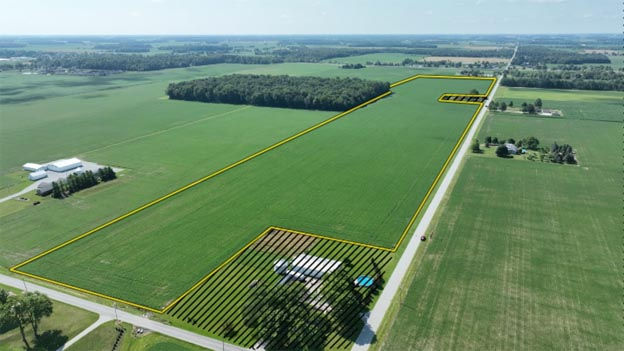Land Values Defy Outside Forces in Heavy Ag State, New Survey Finds
- Brooke Bouma Kohlsdorf

- Sep 20, 2024
- 3 min read
Updated: Sep 27, 2024
Edited by: Dave Price

The farm economy has been a challenging one for many producers in 2024. It is a continuation of the decline from 2023. Low commodity prices, dry weather, and higher interest rates are just several factors impacting overall farm profits.
So, what does this current agricultural atmosphere mean for the future of farmland prices? Will they take a hit from the downturn, or will they continue to do their own thing, and increase as we’ve seen them do?
Purdue University studies this very question and recently released its Farmland Value and Cash Rent Survey for the state of Indiana. The title of the report pretty much sums up the findings:
“Farmland Prices Increase Despite Downward Pressure.”
Through interviews with professionals, researchers found farmland prices hit a new high. The report stated, “The average price of top-quality farmland is $14,392, up 4.8% from June 2023. Average and poor-quality farmland also hit new highs at $11,630 and $9,071 per acre, with an annual increase of 3.7% and 4.4%, respectively.
Survey respondents suggest that this price growth principally occurred during the second half of 2023, with prices retreating a bit in the first half of 2024.”
Despite those overall softening of prices in 2024, some auctions are still able to deliver record prices.
A recent Midwest farmland auction demonstrated how sellers are still able to maximize value for their ground, like the Purdue survey suggested. Schrader Real Estate and Auction Company sold 435 acres of a northeast Indiana farm for $6,615,500.

The land was divided up into eight groups and sold for $14,509 to $21,394 an acre. Mike Roy, one of the agents handling the sale, said the auction was big for that area. “It was one of the largest public land auctions in probably 10 years.”
The author of the Purdue study, Professor Todd Kuethe, Schrader Endowed Chair in Farmland Economics, said although there is downward pressure, “prices have held steady and grown slightly over the last year as a result of retained liquidity in the farm sector, robust demand for farmland for development or other uses, and the limited supply of land on the market over the last year.”
Another person who understands and carefully studies the topic of farmland prices in Indiana is Dr. Todd Davis, Chief Economist for Indiana Farm Bureau. When we asked him if there are expectations that sales prices in Indiana could go down soon, he responded with this: “Tighter margins and higher interest rates are factors that would contribute to lower farmland values. The future markets and crop budgets for 2025 suggest that profit margins will continue to be squeezed.”
But Davis believes there is still reason to be optimistic about the future of land values, and he cites the same Purdue Farmland Value and Cash Rent Survey.
“About 63% of the respondents to the Purdue survey indicated there was less farmland on the market in 2024 than previous years. The tight supply of land may compensate for the projected lower returns to grain farming and higher interest rates.”
RELATED: Ambrook Research produced this podcast about what the impact of shrinking U.S farmland could have on the country’s ability to help feed the world. Find that here.
Davis said the dynamics of negative farming margins, interest rates, and reduced working capital will take some time to work through the market. “Land values are sticky and adjust slowly downward.”
But there seems to be optimism about what will happen to both the farm economy and land prices in the long run, at least according to that Purdue survey. “Respondents were asked to forecast the five-year average corn price, soybean price, mortgage rate, and inflation rate. While respondents are slightly less optimistic about corn and soybean prices relative to a year ago, their price expectations sit just above the average over the last five years.
In addition, respondents expect both interest rates and inflation to moderate slightly, relative to the previous year. In addition, respondents expect both cash rents and land values to increase by around 13% by 2029. Thus, respondents likely expect conditions to improve across the agricultural sector and the broader economy over the next five years.”



